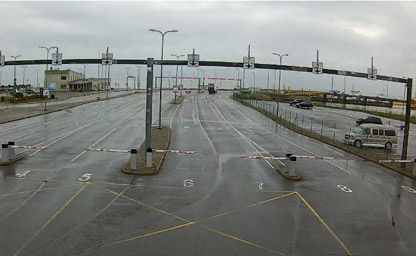
🔴 Rohuküla
It is a seaport connecting the mainland with the islands of Hiiumaa and Vormsi

It is a seaport connecting the mainland with the islands of Hiiumaa and Vormsi
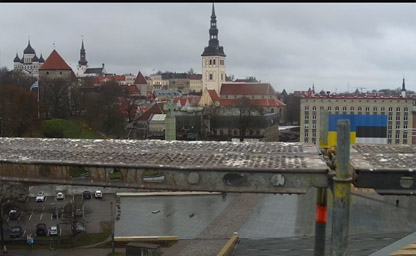
Estonia’s capital on the Baltic Sea
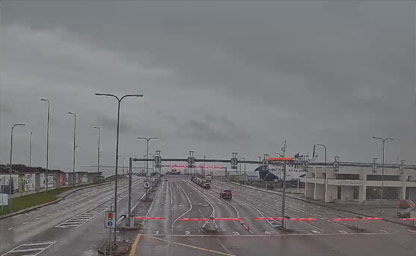
A small borough in Lääneranna Parish
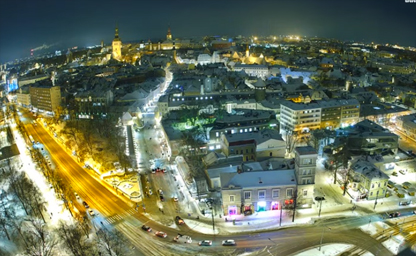
Provides views of the city as well as at the Viru väljak
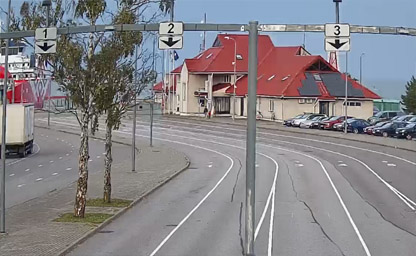
Conveniently situated in Heltermaa Harbour
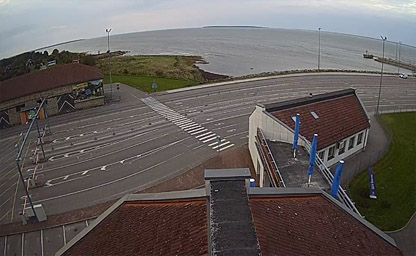
A village on the eastern coast of the Estonian island Muhu
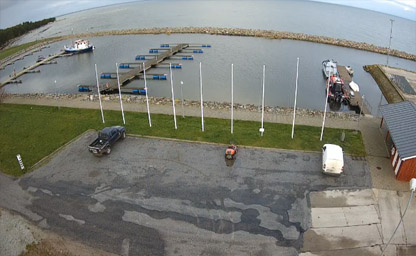
A town on the island of Saaremaa in Estonia

It is a seaport connecting the mainland with the islands of Hiiumaa and Vormsi
Estonia’s live cameras offer a captivating way to explore this Baltic gem, revealing the dynamic interplay between its rich history, natural beauty, and cutting-edge digital society. Whether you’re witnessing the cobblestone streets of Tallinn’s Old Town or the serene landscapes of Lahemaa National Park, these cameras provide a real-time snapshot of one of Europe’s most digitally advanced nations. With its medieval architecture, innovative e-government systems, and a strong sense of cultural heritage, Estonia’s live cameras highlight how this small country has embraced modernity without losing touch with its past.
The capital city, Tallinn, often steals the spotlight in live feeds, with its stunning medieval Old Town standing as a UNESCO World Heritage site. Viewers can catch the bustle of locals and tourists walking through narrow, cobbled streets, passing by the iconic Alexander Nevsky Cathedral and the medieval city walls. From the vantage point of the cameras, the impressive spires of St. Olaf’s Church and the ornate buildings of the Town Hall Square provide a striking contrast against the modern architecture just beyond the city’s historic core. The live streams of Tallinn’s Old Town serve as a constant reminder of the city’s strategic importance throughout history, particularly during its time as a key trading hub in the Hanseatic League.
In addition to its medieval charm, the live cameras also capture Tallinn’s evolution into a modern, tech-driven city. Estonia is a global leader in digital governance, and its e-residency program is one of the most innovative initiatives in the world. The cameras in the city center often showcase how seamlessly the digital and physical worlds coexist, with bustling cafés, startups, and tech hubs blending effortlessly into the city’s ancient architecture. Visitors tuning into these live streams can witness the country’s forward-thinking approach to technology, whether it’s the rise of co-working spaces, the vibrant startup scene, or the digitization of government services, all contributing to Estonia’s status as one of the most digitally connected countries globally.
Venture beyond Tallinn, and the live cameras offer glimpses into Estonia’s diverse natural landscapes. In places like Lahemaa National Park, the cameras often showcase dense forests, pristine lakes, and rugged coastlines that reveal Estonia’s commitment to preserving its natural beauty. The park is home to a variety of wildlife, including elk and lynx, and features historic manor houses that reflect the country’s aristocratic past. Estonia’s dedication to environmental sustainability is clearly visible in these feeds, as the country balances modern development with the preservation of its landscapes. The streams from the countryside also offer a peaceful contrast to the urban hustle and bustle, allowing viewers to experience Estonia’s deep connection to nature.
The coastal regions, particularly the islands of Saaremaa and Hiiumaa, are often featured in live streams as well. These areas offer picturesque views of windmills, charming villages, and the expansive Baltic Sea. The islands are known for their laid-back pace of life and rich cultural traditions, which are still very much alive today. The live camera feeds from these islands often highlight the serene beauty of the archipelago, with its pristine beaches and unspoiled landscapes, giving viewers a sense of the tranquil way of life that contrasts with the more urbanized areas of Estonia.
One of the most fascinating aspects of Estonia’s live cameras is their reflection of the country’s unique geopolitical history. Nestled between Russia and Finland, Estonia’s location has historically made it a crossroads of various powers, each leaving their mark on the culture and architecture. The live streams of the country’s border regions often highlight the remnants of this complex past, with Soviet-era structures and military sites dotting the landscape. Estonia's independence, regained in 1991 after decades of Soviet occupation, is also evident in its thriving national identity, which is visible in the way the country has preserved its language, culture, and traditions through the years. The live cameras allow viewers to witness how this complex history is woven into the fabric of daily life, where modern Estonia stands as a proud member of the European Union and NATO.
In terms of innovation, Estonia’s use of live cameras is part of its broader digital strategy. With one of the highest levels of internet penetration in the world, the country has also made significant strides in creating a "smart" society. Live cameras monitoring everything from traffic in Tallinn to nature reserves in the countryside are integrated into a larger system of data collection and management. This high-tech infrastructure not only enhances the daily lives of Estonians but also positions the country as a leader in smart city and e-government solutions. The integration of cameras into this digital ecosystem helps improve everything from urban planning to tourism management, ensuring that visitors and residents alike have a seamless experience as they navigate the country.
For those interested in exploring the country further, the live streams also showcase Estonia’s active cultural scene. Festivals, concerts, and performances are frequently broadcast, allowing people to experience the artistic side of the nation in real-time. Whether it’s the Tallinn Music Week, which brings together artists from around the world, or the vibrant Christmas markets that light up the city during the holiday season, these live cameras provide a glimpse into the cultural life of Estonia, giving visitors an opportunity to engage with the country’s thriving arts and entertainment scene without leaving their homes.
Here’s a useful tip: If you’re planning to visit Estonia, consider checking out the live feeds from Tallinn’s Seaplane Harbour Museum. This interactive maritime museum, housed in a historical seaplane hangar, offers fascinating insights into Estonia’s naval history, and the live cameras often provide a sneak peek into its exhibits. It's a must-visit for those interested in the history of maritime navigation and Estonia’s historical ties to the sea.
Fun fact: Did you know that Estonia is often called the “Silicon Valley of Europe”? This is due to the country’s reputation for fostering a strong tech ecosystem, which has led to the creation of major digital companies like Skype. Estonia’s commitment to innovation and its e-residency program, which allows anyone in the world to start a business in Estonia remotely, has made it a global leader in digital entrepreneurship.
Estonia’s history is marked by a series of foreign occupations, cultural exchanges, and a fierce pursuit of independence, which has shaped the nation into the unique and resilient country it is today. Located in Northern Europe, Estonia shares borders with Russia to the east, Latvia to the south, and the Baltic Sea to the west. The area now known as Estonia has been inhabited for thousands of years, with evidence of human settlements dating back to the Mesolithic period, around 10,000 years ago. The early Estonians were part of the larger Baltic-Finnic group, and their culture and traditions have been influenced by the various peoples and empires that controlled the region over the centuries.
The first major foreign influence in Estonia came in the 12th century when the Christian Crusaders from Denmark and the German Livonian Order arrived. By 1219, Denmark had gained control of much of present-day Estonia, establishing it as part of the Kingdom of Denmark. However, the Teutonic Knights, a German military order, soon took control of the region, establishing a feudal system that would dominate for several centuries. The German influence left a lasting mark on Estonia’s language, culture, and architecture, especially in the cities of Tallinn and Tartu, where medieval Germanic structures are still visible today.
In the 16th century, the Protestant Reformation spread throughout Estonia, leading to the decline of the Catholic Church's influence in the region. The arrival of the Swedish Empire in the 17th century marked the beginning of a period of Swedish rule, which brought with it advancements in education and governance. During the Swedish period, Estonia’s economy grew, and the local population experienced greater freedoms, including the rise of a more educated middle class.
By the early 18th century, the Great Northern War between Sweden and Russia resulted in a significant shift in the region’s power dynamics. Following Russia's victory in 1721, Estonia became part of the Russian Empire, which lasted for nearly two centuries. During this time, Estonia saw both growth and hardship. The 19th century brought a wave of nationalist movements across Europe, and Estonia was no exception. Estonians began to push for greater political and cultural autonomy, and by the early 20th century, the seeds for independence were planted.
After the collapse of the Russian Empire during World War I, Estonia declared its independence on February 24, 1918. However, this period of independence was short-lived, as Estonia was soon occupied by Soviet Russia and later by Nazi Germany during World War II. The post-war era saw Estonia absorbed into the Soviet Union as one of its republics in 1940, marking the beginning of a long period of Soviet domination.
It wasn’t until the late 1980s, during the period of Mikhail Gorbachev's reforms in the Soviet Union, that Estonia began to regain its independence. A series of peaceful protests, known as the Singing Revolution, eventually led to Estonia’s declaration of independence from the Soviet Union on August 20, 1991. Since then, Estonia has undergone rapid modernization, embracing democratic governance, free market capitalism, and integration into European and international institutions, including the European Union and NATO.
Today, Estonia is a thriving and dynamic nation that prides itself on its digital innovation, sustainable practices, and strong cultural identity. The legacy of its tumultuous history has shaped its society into one that values independence, resilience, and progress. Estonia's capital, Tallinn, is a UNESCO World Heritage site, known for its medieval Old Town and modern, forward-looking architecture.
Estonia's climate is classified as temperate, with distinct seasons and a marked variation between the coastal areas and inland regions. Located on the northern edge of the European continent, Estonia experiences a cool, maritime climate that is heavily influenced by its proximity to the Baltic Sea. This geographical positioning gives Estonia long, cold winters and relatively short, mild summers, with rainfall fairly evenly distributed throughout the year.
Winter in Estonia can be quite harsh, particularly in the inland areas. Temperatures often drop below freezing, with January being the coldest month, where temperatures can range between -10°C (14°F) to -15°C (5°F). The coastal areas, including Tallinn, tend to be slightly milder, with the moderating effect of the Baltic Sea keeping temperatures from dipping as low. Snow is common, and Estonia’s winter months offer opportunities for winter sports such as skiing, ice fishing, and snowshoeing, particularly in the country’s many national parks and forested areas.
Summers in Estonia are short but pleasant, with daytime temperatures averaging between 15°C (59°F) and 20°C (68°F) in June and July. The summer months bring long daylight hours, with the sun setting late into the evening, especially in the northernmost regions of the country. Estonians take full advantage of the warm weather, spending time outdoors in parks, by lakes, and at the beach. The coastal areas, such as Pärnu, which is known as Estonia's summer capital, are popular destinations for relaxation, offering sandy beaches and a vibrant cultural scene.
Spring and autumn are transitional seasons in Estonia, with spring bringing a thaw to the frozen landscapes and the blossoming of wildflowers and trees. Autumn, on the other hand, is marked by vibrant foliage as the forests and countryside are painted in rich reds, oranges, and yellows. These seasons are less extreme than winter and summer, with temperatures ranging between 5°C (41°F) and 10°C (50°F). Both spring and autumn are great times to visit Estonia, as the natural beauty of the country is in full display, and the weather is mild enough for outdoor activities.
Rainfall in Estonia is fairly evenly distributed throughout the year, with the wettest months being late summer and autumn. However, rainfall is typically light to moderate, and the frequent showers help maintain the lush greenery that the country is known for. Despite the cool climate, Estonia is home to diverse ecosystems, including forests, wetlands, and bogs, which are an integral part of the country's identity and natural beauty.
One unique feature of Estonia's climate is its extensive network of islands and coastal areas, which are shaped by the winds and currents of the Baltic Sea. The coastal regions tend to experience slightly milder winters and more moderate temperatures overall. Estonia is also known for its white nights during the summer, where the sun barely sets, and the skies remain light late into the evening, especially in the northern parts of the country.
Estonia’s geography is as diverse as its history, offering a mix of coastal landscapes, forested hills, lakes, and wetlands. The country is located in the northeastern part of Europe, bordered by Latvia to the south, Russia to the east, and the Baltic Sea to the west and north. Despite being a relatively small country, Estonia has a variety of geographic features that make it a unique and interesting destination.
The total land area of Estonia is approximately 45,000 square kilometers (17,000 square miles), making it one of the smallest countries in Europe. The country is mostly flat, with about half of its land area covered by forests, providing a wealth of opportunities for outdoor activities and eco-tourism. Estonia is also home to more than 1,500 islands, with Saaremaa and Hiiumaa being the largest and most well-known. These islands are known for their pristine natural beauty, charming villages, and coastal traditions. The islands and the extensive coastline give Estonia a strong maritime identity, with fishing and boat-building playing significant roles in its culture and economy.
Inland, Estonia is marked by its many lakes, rivers, and wetlands, which cover nearly one-third of the country. The largest lake in Estonia is Lake Peipus, which also forms part of the border with Russia. The lake is an important ecological feature and provides a habitat for a wide range of wildlife, including migratory birds. Additionally, Estonia’s many national parks, such as Lahemaa National Park, which is located on the northern coast, offer rich biodiversity, including old-growth forests, peat bogs, and scenic trails.
Estonia is also home to a number of unique geological formations, such as the rugged cliffs and caves found along the northern coastline. The country's geography is shaped by its location at the meeting point of the Fennoscandian Shield and the Russian Platform, giving rise to the variety of terrain and natural landscapes found across the nation. The climate, soil, and geology all contribute to Estonia’s rich flora and fauna, making it a haven for nature enthusiasts.
The country is also dotted with picturesque small towns and villages that reflect Estonia’s rural charm. These settlements are often located near lakes or along rivers and are surrounded by forests, giving visitors a chance to experience the peaceful and serene countryside that Estonia is known for. The capital city, Tallinn, is located on the northern coast and offers a stunning view of the Gulf of Finland, with its medieval Old Town sitting alongside modern architecture.
Tip: For those visiting Estonia, take time to explore the many national parks and nature reserves. The island of Saaremaa, in particular, is a great destination for hiking, cycling, and exploring medieval castles, windmills, and unique landscapes.
Interesting fact: Estonia is one of the greenest countries in Europe, with over 50% of its land covered by forests. The country is known for its commitment to sustainability and environmental conservation, with numerous eco-friendly initiatives and a focus on preserving its natural heritage for future generations.